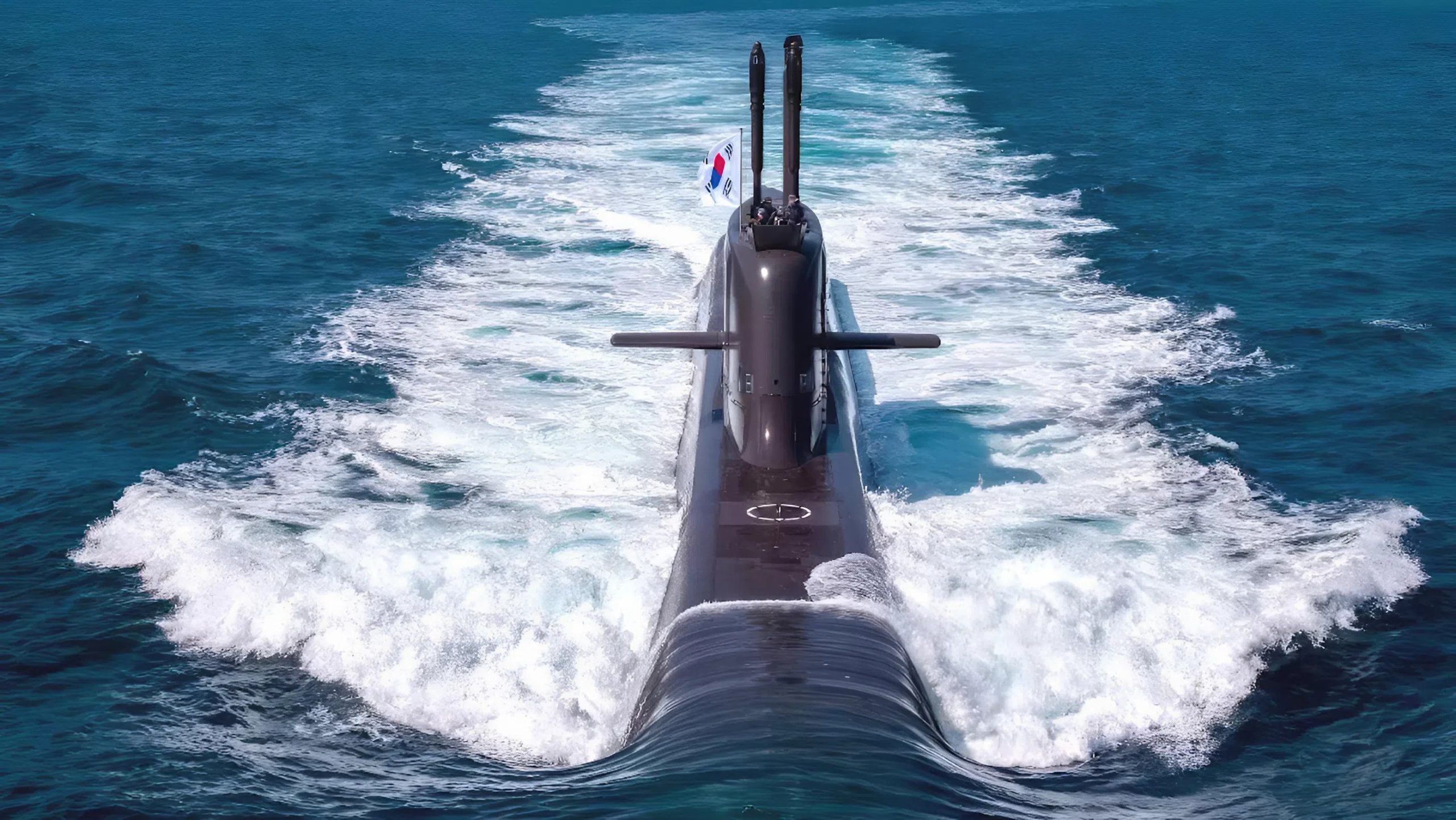On his way to make «America Great Again», Donald Trump has made yet another step that may challenge arms control and the nonproliferation regime. During his summit with South Korea leader Lee Jae Myung at the APEC Summit in Gyeongju, South Korea, Donald Trump announced that the US allows South Korea to build nuclear submarines as well as reprocess nuclear fuel. Joint factsheet issued after the meeting reaffirms US support for «ROK’s civil and naval nuclear power programs».
Donald Trump’s decision represents a significant change in the U.S.-ROK alliance by directly incorporating a nuclear component. However, the development of a South Korean nuclear-powered submarine program, along with similar efforts from other non-nuclear-weapon states, poses a considerable challenge to the Nuclear Non-Proliferation Treaty (NPT). As a state on the verge of possessing nuclear capabilities, South Korea’s pursuit of such technology is likely to escalate tensions with North Korea (DPRK).
Furthermore, this development could draw Seoul into the broader U.S.-China strategic rivalry. This aligns with the observation by Mr. Vladimir Ladanov, a member of PIR Center Advisory Board and ambassador, who notes that similar capabilities – such as Australia’s SSNs under a U.S.-led coalition are intended to deter nations like China and Russia from challenging American interests in the region. South Korea attempted a military nuclear program in the 1970s and even a secret SSN program in 2003. PIR Center covered the South Korean submarine fleet status and capabilities in its 2023 report.
At that time, the Joe Biden administration presumably tried to withdraw from such a radical decision by reassuring the US commitment to bolster the nuclear umbrella and enhancing consultation mechanisms. To better understand the motivations behind D. Trump’s posture and its potential consequences for the NPT and regional security, PIR Center conducted interviews with leading experts in the field.
Mr. Roman Kalinin: Why has the Donald Trump administration decided to loosen its control over the South Korean nuclear program?
Mr. Dmitry Stefanovich (Member of PIR Center Advisory Board, Research Fellow at the Center for International Security, IMEMO RAS): Interestingly, during the previous administration of Donald Trump, restrictions on South Korean missiles were lifted. This appears to be part of a sustained and strengthening trend aimed at transforming South Korea into a self-reliant ally. This was further underscored recently when E. Colby, US Under Secretary of Defence for Policy, publicly pointed to Seoul as a model for other American partners to emulate. At the same time, it is not as though the Biden administration has been moving in a different direction. Indeed, it was under his leadership that the Washington Declaration was signed, leading to the establishment of the Nuclear Consultative Group (NCG).
Mr. Roman Kalinin: Does South Korea have the technology to produce SSNs on its own?
Mr. Dmitry Stefanovich: Seoul possesses a robust foundation in both shipbuilding, including submarine construction, and nuclear technology. While establishing a fully capable nuclear submarine fleet requires operational experience and is more than the sum of its technological parts, South Korea is well-positioned to achieve this goal relatively quickly. This is especially true given Washington’s promise of technological assistance, which is expected to include the transfer of critical expertise from American developers and builders of nuclear-powered attack submarines.
Mr. Roman Kalinin: How could the potential ROK nuclear submarine program affect the balance of power on the Korean Peninsula?
Mr. Roman Lobov (Senior Expert, Russian Institute for Strategic Studies): It’s doubtful that the construction of a nuclear submarine in the Republic of Korea will dramatically affect the balance of power on the Korean peninsula and in Northeast Asia.
It should be borne in mind that the Korean Peninsula and Northeast Asia are within the area of strategic interest for the countries with significant nuclear potential (that is, Russia, the USA, and China). Besides, DPRK has also been actively developing its nuclear and missile programme. However, as can be seen from several expert papers, Pyongyang’s nuclear capabilities assessment remains a matter of debate. Recall also that the rapprochement between Moscow and Pyongyang led to the balancing of regional power. Thus, a Washington-Seoul-Tokyo «triangle» got a so-called «counterbalance» in the form of a comprehensive strategic partnership between Russia and DPRK.
Second, DPRK is working on the construction of its own nuclear submarine, as Pyongyang’s periodicals already reported in March 2025. This caused a wave of concerns in the Republic of Korea. In addition, some South Korean politicians and experts have been arguing for the necessity of the so-called «nuclear self-reinforcement», which implies resuming the nuclear military programme. Nowadays, the idea of possessing one’s own nuclear deterrent is still very popular, according to South Korean public opinion polls.
Third, even given a favourable domestic and foreign policy environment, Seoul still has a long way to go to construct its own nuclear submarine. At the same time, possession of a nuclear-based submarine may become a prologue for Seoul to take active steps towards restarting its military nuclear programme.
Fourth, the Republic of Korea remains a US ally and coordinates its foreign and defence policy with Washington. Politically and militarily, Seoul lacks autonomy (in this regard, it is sufficient to recall that Seoul doesn’t have wartime operational control over its army).
Mr. Roman Kalinin: What security objectives does South Korea pursue in implementing its nuclear submarine program?
Mr. Greg Yoo (expert, Phd researcher at MGIMO, Republic of Korea): South Korea lobbied for US approval to build SSNs for nearly 30 years. Its pursuit of nuclear-powered submarines stems from a combination of strategic motives: reducing dependence on the United States, reinforcing deterrence against North Korea, and maintaining a position of strength in the shifting regional power balance. A South Korean nuclear-powered submarine (SSN) program is seen as a step toward self-reliant defense.
Next, acquiring nuclear-powered submarines strengthens South Korea’s own deterrence against adversaries, mainly North Korea. North Korea has already unveiled a tactical nuclear attack submarine, and it publicly announced as an «urgent» priority to build an accurate SSN of its own. Therefore, with North Korea openly pursuing an SSN as part of its strategic arsenal, South Korea sees a need to respond in kind. Even if ROK SSNs carried only conventional ballistic missiles, they could provide a far more survivable platform: they could remain hidden for long periods. They would be challenging to locate or neutralise. This enhances South Korea’s ability to respond after a potential initial attack, thereby reinforcing deterrence by punishment.
It is worth noting that currently, the United States is pushing for deeper «integrated deterrence» and urging South Korea to join efforts to counter China. In 2006, South Korea and the United States agreed that US forces in Korea would not be used without the explicit consent of the South Korean government. Until a new agreement on strategic flexibility is made, it is reasonable to assume that the South Korean government will maintain autonomy over SSN deployment.
Lastly, it is also important to emphasise that South Korea’s SSN program remains consistent with nonproliferation commitments. South Korea has repeatedly stated that its submarines will be conventionally armed and powered by low-enriched uranium. South Korea remains firmly committed to the NPT and IAEA safeguards and has made clear that it seeks nuclear propulsion, and not nuclear weapons.
Mr. Roman Kalinin: How does South Korea assess the impact of the nuclear submarine program on the balance of power in the region?
Mr. Greg Yoo: From South Korea’s perspective, an SSN program does not upset the status quo; it simply brings South Korea in line with capabilities that others already possess. China operates a substantial nuclear-submarine fleet, and North Korea has openly announced its own SSN ambitions. In this context, South Korea views its program not as a provocation but as a necessary measure to restore equilibrium.
In addition, when Russia and North Korea signed their mutual defense treaty last year, I understood it as their attempt to create symmetry with the already existing South Korea-US mutual defense treaty. They were «reacting» to an imbalance, not inventing a new security structure. I think a similar logic applies to South Korea’s pursuit of nuclear-powered submarines. China already possesses a large SSN fleet, and North Korea is also openly developing one. In this environment, South Korea is not initiating an arms race; it is following the precedents set by its neighbours. From this perspective, as a follower, South Korea’s entering the nuclear-propulsion domain makes the region more symmetrical, and therefore arguably more stable.
Although some argue that South Korea’s nuclear-powered submarines will accelerate a regional arms build-up, I believe their actual impact on Northeast Asia’s military balance will be minimal. The regional arms race was already intensifying long before this announcement. China has been steadily expanding its nuclear submarine fleet as part of its broader competition with the United States. Moreover, Japan has been moving toward a stronger military posture by proposing to amend its constitution of peace.
Finally, before examining its impact on the regional balance of power, it is essential to emphasize that this announcement marks only the beginning of a lengthy and challenging process, with numerous obstacles ahead. Technically, South Korea still needs to transition from lab-scale concepts to a reliable, compact naval reactor that can operate safely for years within a submarine, a task far more demanding than powering civilian reactors. Diplomatically, South Korea will need to negotiate detailed arrangements with the IAEA to ensure that naval nuclear propulsion remains compatible with nonproliferation obligations and does not fuel broader proliferation concerns. Legally and politically, whether revising the existing South Korea-US nuclear cooperation agreement or the US providing South Korea with LEU fuel, it will be highly complex: any deal will have to pass through the US bureaucracy and Congress under the Atomic Energy Act, where nonproliferation hawks are influential. The balance of power may change over the next decade.
Conclusion
Thus, South Korea’s domestic SSBN program currently raises more questions than it provides answers. Should Seoul decide to proceed politically, it would require legal and technological preparedness. Firstly, an amendment to the U.S.-Republic of Korea (R.O.K.) Agreement for Peaceful Nuclear Cooperation, known as the «123 Agreement». Additionally, South Korea will need to negotiate a Comprehensive Safeguards Agreement (CSA), an Additional Protocol (AP), and an Article 14 arrangement with the IAEA. We believe that the ROK will use the same path as Australia – bilateral negotiations to ensure IAEA verification while protecting classified information. In terms of construction and technology, despite having advanced indigenous nuclear and naval capabilities, South Korea is more likely to rely on US experience.
Keywords: Nuclear nonproliferation; South Korea
NPT
E16/SHAH – 25/11/21


